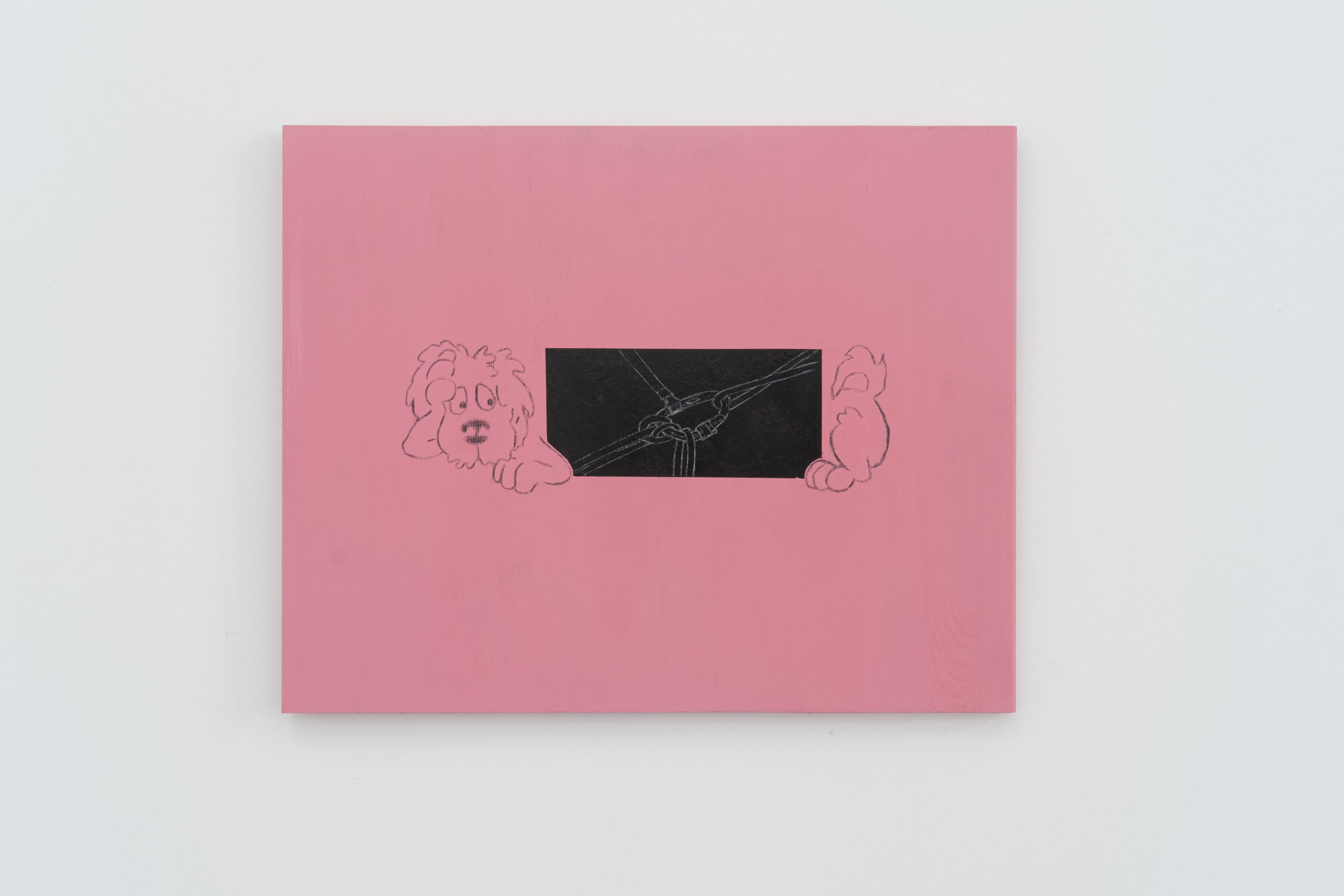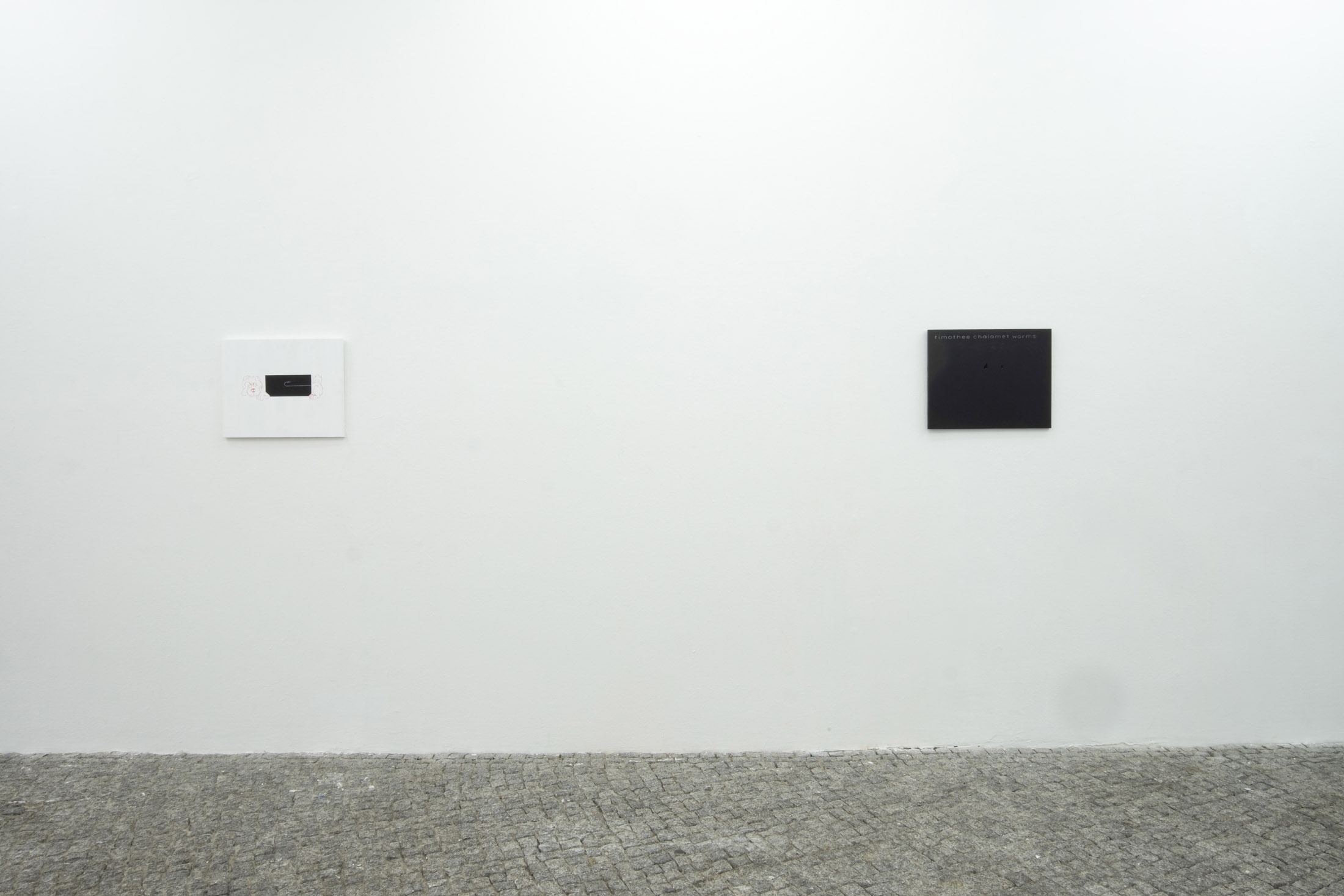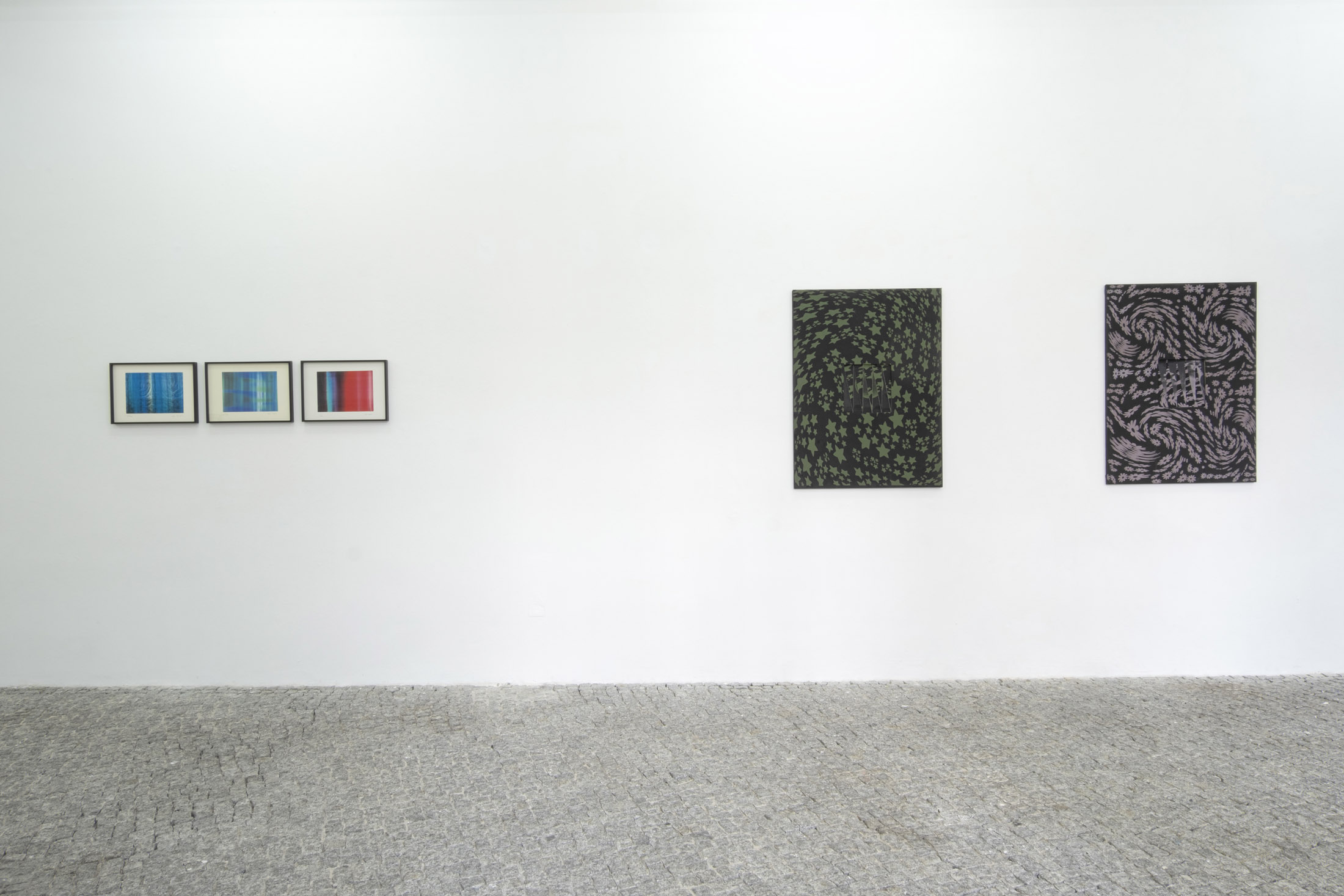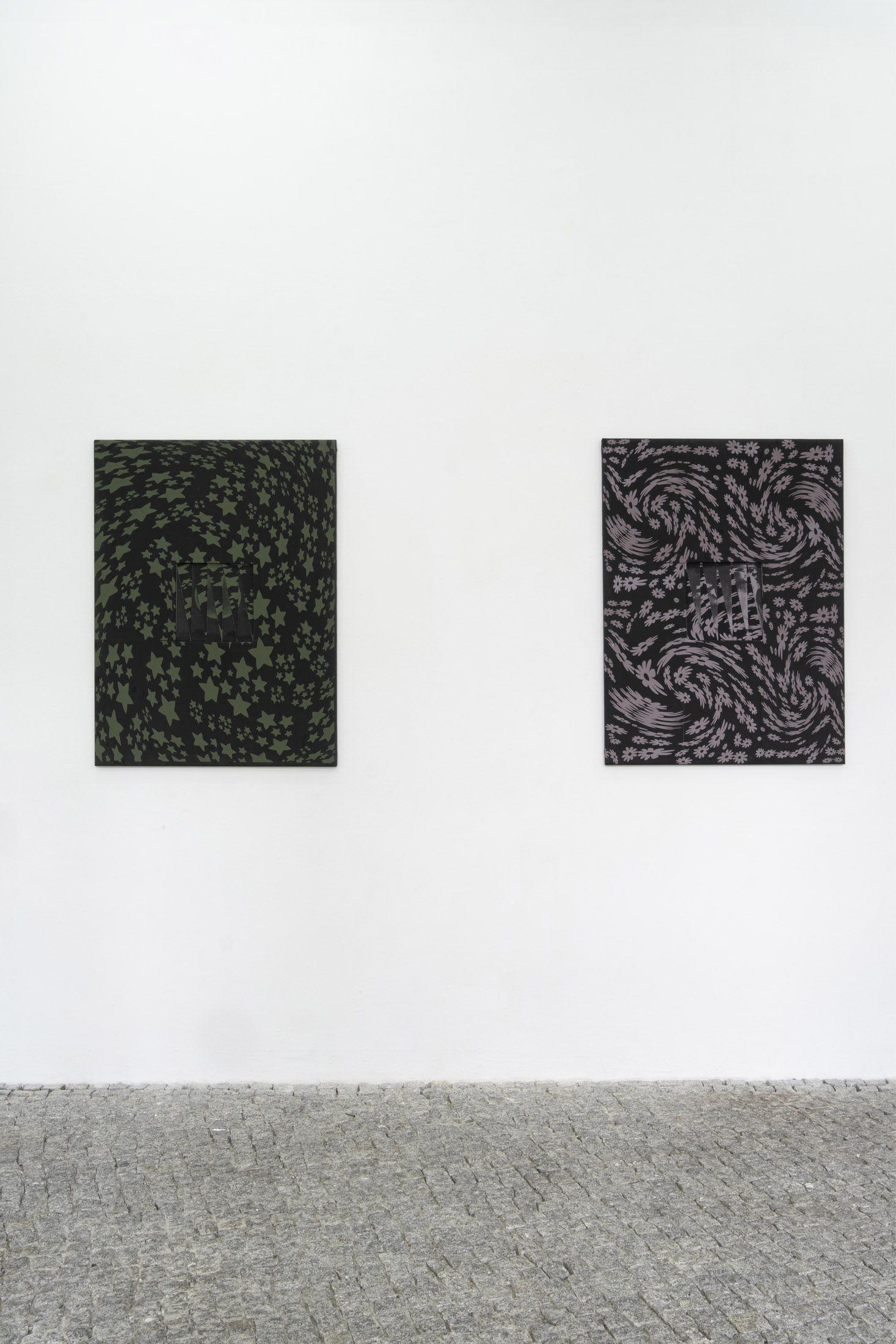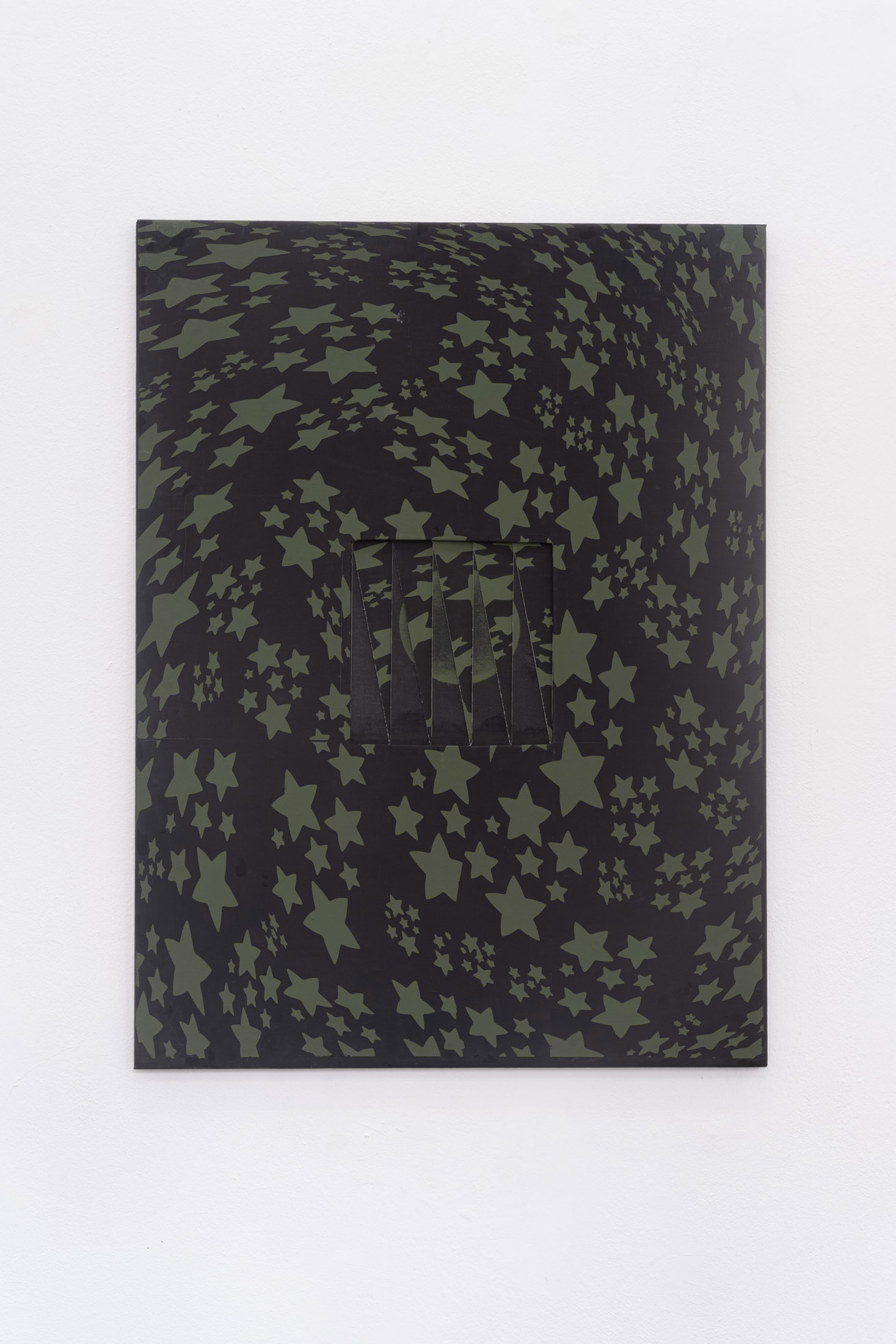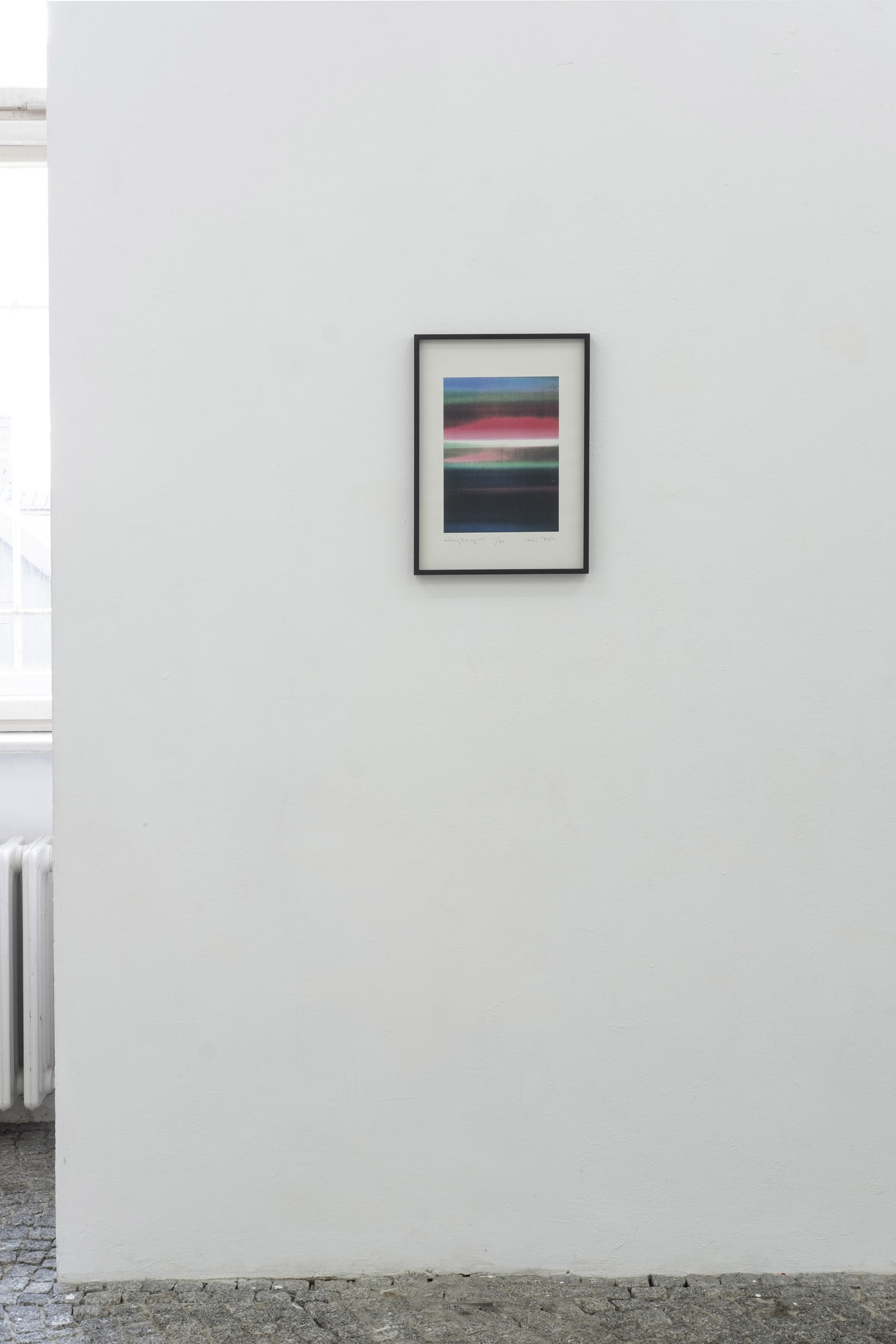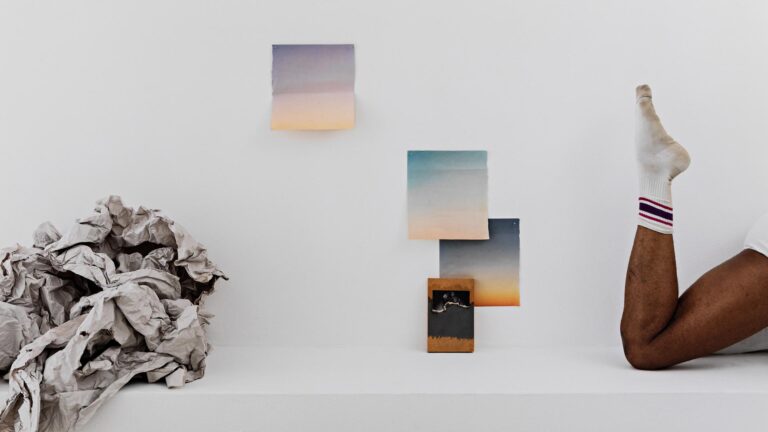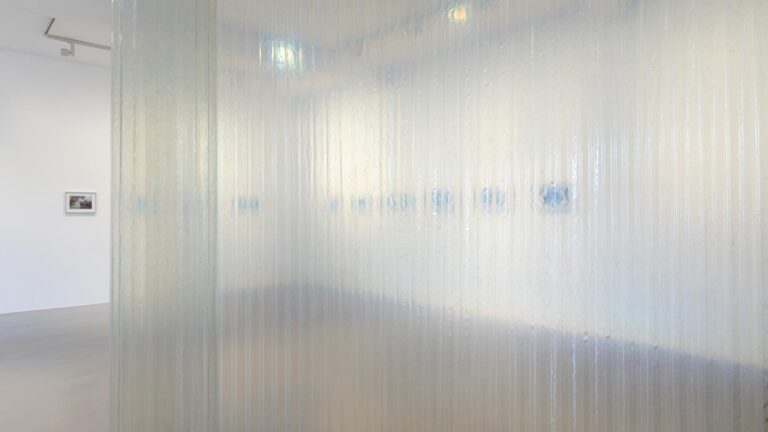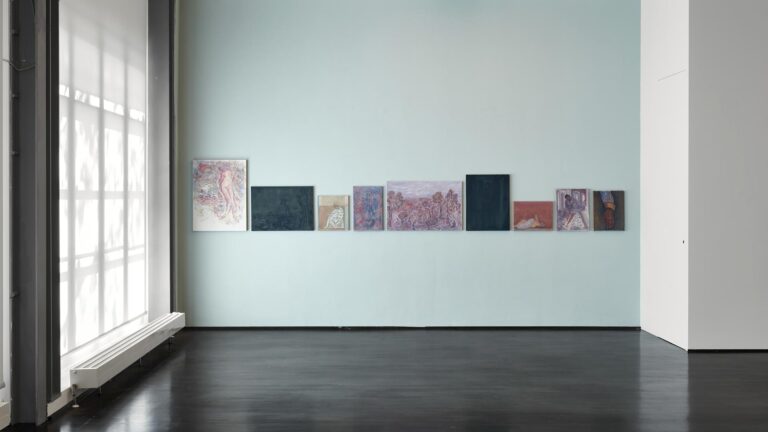Artists: Kevin Desbouis, Pati Hill, Charlotte Houette
Exhibition title: other people’s clothing
Curated by: Fiona Vilmer
In collaboration with: Les Bains-Douches, Alençon
Venue: Gr_und, Berlin, Germany
Date: 15 June – 2 July 2023
Photography: all images copyright and courtesy of the artists and Gr_und, Berlin
other people’s clothing, the exhibition featuring Kevin desbouis, Pati Hill and charlotte Houette, has already happened elsewhere1. some thoughts slumber while others stretch out. A mere effect of the sliding of the signifier2,or, in this case, of perception.
Yet, how can we grasp the attitudes towards disappearance which are inherent in forms, or more precisely, those processes of visibility that leave a fuzziness in which possible fictions and other attempts to slip away can emerge? Paintings and xerographs share gestures of appropriation, displacement or dissimulation, and evoke – through their repetition in space – changes of state, psychic or almost able to twist you (literally). some are more dramatic than others. some more comic than others. series, sequence, reproduction of motifs and printing techniques hint at attitudes that are closely related to editing3. Through these flattening actions, the notion of version extends to the surface of the forms, staging ‘tactics’ of subterfuge or trickery as regimes of visibility, present or deliberately absent. an anti-spectacular special effect that generates a distortion of the point of view.
iI, in its increasingly elaborate cinematographic handling, the special effect fades into the image, making it perceptible would be like creating an image that is no less special. one of those that draws you in and enchants you, triggering mechanisms of fiction and desire. Logics of appearance – or again, of concealment – that take you from one version of yourself to another. in a way, by being perceptible, the special effect assumes a role specific to illusion while at the same time revealing it, «toggling between wonder and trick»4. yet its attractiveness, however accessible, seems deceptive or suspicious, leading to an eventual distancing from it. a sort of gimmick, similar to what theorist sianne ngai describes in her book Theory of the Gimmick5, defining an aesthetic judgement and a capitalist form6 whose fascination and mistrust maintain this same slipping of judgement7. so much so, she says, that to recognise the gimmick is to recognise its power of illusion (to which we can be sensitive) while at the same time making the illusion transparent and putting it at a distance. so if the special effect is visible – like the punch line of a joke that we might have anticipated – is it still a special effect despite its ‘failed’ or tangible aspect?
In Kevin desbouis’s installations, intensity and indetermination operate in the recirculation of images, words and objects. He conceives his artworks as situations that are not explicit, or with a partially accomplished potential, which may encompass cinematic, erotic or repressed aspects. the distance between the object and the subject creates the potential for confusion, between deception and seduction. in the form of a hidden sequence or script, the wooden panels suggest instructions similar to an ambiguous motivations speech. there are also dogs performing an equivocal advertisement. in this scenario, comedy seems to melt with exasperation, and objects of constraint appear to us as x-ray visions or promises.
In the early 1970s, after a thirteen-year break from publishing, Pati Hill began photocopying her domestic environment. objects and garments are life-size recorded by the copier, conferring on them a distance free of nostalgic concerns. Pati Hill’s xerography abandons a sense of fascination in favour of abundance, revealing her keen attention to the limited objects around her. the bureaucratic machine associated with secretarial work plays a literal, compulsive role in Pati Hill’s work. Her xerographs from the 1990s contain many tiny variations. their abstraction is the result of multiple successive passages of each colour through the machine, making them part of a laborious process. The image returns them their fiction, their magic, and the machine returns their uncertainty. in their intimate format, they almost seem to ironise american abstract painting.
Charlotte Houette’s paintings create fantasmatic spaces in which wandering has distorting and shimmering effects. there are two kinds of aberrations, both chromatic and on the motif, that produce effects of bewilderment, the kind of psychological vehicles that are not intended to induce a semantic of emotions. Her works generate spatial loops that manipulate visibility systems, where motifs repeat and stretch, colouring a psychedelic and hallucinatory movement, but where the painting is anything but virtual. the structure of the paintings incorporates prototypical constructions, akin to scale models and the pop-up mechanisms of appearance and camouflage. Charlotte Houette’s work has a swirling, saturated atmosphere, as if never quite awake, with a lurking sensation of derealisation that affects us as much as the space in which they are displayed.
other people’s clothing deals with the notion of attitude, in which the possible ways of being and repositioning oneself in the world of reality indicate that something is always – and already – happening elsewhere (in an artistic practice, for example). the special effect produces forms in which paint and print merge in their relationship to the surface and an apparent superficiality. Yet it is several layers in a laborious process that give shape to unexpected plays of depth. retinal impressions fade, and associations of the mind, some of them more erotic or enigmatic, rush in and become necessary to make you fall head over heels. and, if you let yourself fall, these absorption phenomena can create confused, amazed presences.
Fiona Vilmer, June 2023 Special thanks to sophie vinet, Kevin desbouis, charlotte Houette, and to baptiste Pinteaux, nicole Huard, and florence bonnefous (Galerie air de Paris) for the presence of Pati Hill in this exhibition. The exhibition is supported by les bains-douches (alençon, france), l’institut français, région normandie and Project space festival.
1.« The exhibition «other people’s clothing» took place at the art centre Les Bains-Douches in alençon, france, from 11 march to 24 april 2022. curated by fiona vilmer with Kevin desbouis, Pati Hill and charlotte Houette. at Gr_und (berlin), you are in the second occurrence of the exhibition.
2. a fragment from on of Jack Goldstein’s aphorisms.
3. a reference to the publishing practices of each of the artists in this exhibition. Kevin desbouis publishes the magazine Suckcess, an artist’s book that brings together several contributors and deals with issues of compromise, hatred, secrecy, self-erasure and the staging of the self. Pati Hill has published several novels (including One Thing I Know, 1962 ; reprinted in 2022 by daisy editions), collections of poems (including Slave Days, 1975) and made her own books in which her xerograph works are bound; charlotte Houette founded EEAPES with clara Pacotte, a research project on feminist science-fiction writing; they publish a series of readers containing previously unpublished writings and translations. she has also published and translated Faux Pas, a collection of writings by painter amy sillman, with after 8 books.
4. «Toggling between wonder and trick, overvaluation and correction, the gimmick thus draws into sharper relief something about the workings of comedy, just as comedy reveals the gimmick as aesthetic form.» in « Theory of the Gimmick » in Critical Inquiry, Comedy, an Issue, edited by lauren berlant and sianne ngai, volume 43, number 2, winter 2017. https://doi.org/10.1086/689672 5. sianne ngai, Theory of the Gimmick. Aesthetic Judgement and Capitalist Form, Harvard university Press, 2020.
6. in her book sianne ngai theorizes the gimmick as an aesthetic judgment and a virtual form in capitalism. the gimmick is “irritating yet strangely attractive”, it is “linked to our perception of an object making untrustworthy claims about the saving of time, the réduction of labour and the expansion of value.”
7. « It is more precisely the transformation of idea into thing in a way that charms but also disturbs us » in « Theory of the Gimmick » in Critical Inquiry, comedy, an issue, edited by lauren berlant and sianne ngai, volume 43, number 2, winter 2017. https://doi.org/10.1086/689672
other people’s clothing, 2023, exhibition view, Gr_und, Berlin
other people’s clothing, 2023, exhibition view, Gr_und, Berlin
Kevin Desbouis , Pure and ready for the stars , painting on wood, mixed media,50 x 40 cm, 2023
Kevin Desbouis , Untitled (Worms), painting on wood, mixed media, 50 x 40 cm, 2023
other people’s clothing, 2023, exhibition view, Gr_und, Berlin
other people’s clothing, 2023, exhibition view, Gr_und, Berlin
Pati Hill, Untitled , xerography, numbered and signed 29,6 x 41,9 cm, c. 1990, (each). Courtesy Air de Paris, Romainville
Charlotte Houette, Baby Horse 1 and Baby Horse 5 , vinyl paint on canvas, carboard, silkscreen 100x75cm, 2021. Courtesy High Art, Paris
Charlotte Houette, Baby Horse 1 , vinyl paint on canvas, carboard, silkscreen 100x75cm, 2021. Courtesy High Art, Paris
Charlotte Houette, Baby Horse 5 , vinyl paint on canvas, carboard, silkscreen 100x75cm, 2021. Courtesy High Art, Paris
other people’s clothing, 2023, exhibition view, Gr_und, Berlin
Kevin Desbouis, Paint or Love 2 , painting on wood, mixed media 50 x 40 cm, 2023
Kevin Desbouis, Paint or Love 2 , painting on wood, mixed media 50 x 40 cm, 2023
other people’s clothing, 2023, exhibition view, Gr_und, Berlin
Pati Hill, Untitled, xerography, numbered and signed 41,9 x 29,5 cm, c. 1990. Courtesy Air de Paris, Romainville
Pati Hill, Untitled, xerography, numbered and signed 41,9 x 29,5 cm, c. 1990. Courtesy Air de Paris, Romainville

